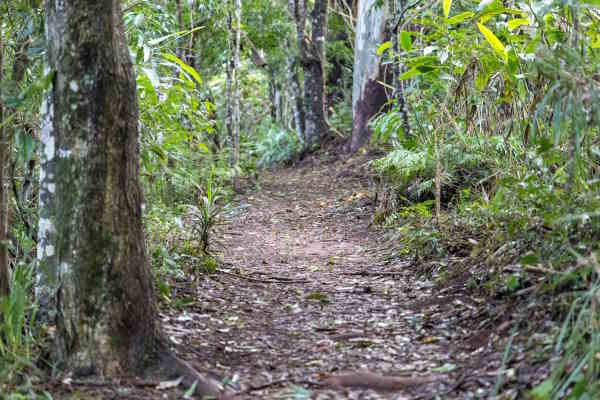Matthew Evans SOIL– The incredible story of what keeps the earth, and us, healthy
(Allen and Unwin, 2021)
A review by Judy Lewis
A short time after reading this informative book, I was walking through rainforest in the Bunya Mountains. The abundance of decomposing vegetation, the variety of fungi, mosses and that mystical something that forests have, plus a sense of wanting to express some of my feeling for the natural world, put in mind a book review. As I reread the preface to SOIL, I noted that Evans’ first paragraph described his experience in the Tarkine rainforest and, like him, I would also once have only noticed the ferns and tall trees, but this time my attention was also drawn downwards. Soil is only visible on the paths in rainforests as a layer of composting plant material nourishes the forest floor but it is essential for both forests and all terrestrial lifeforms.
Evans’ exuberant writing style was somewhat irritating at first, but his ability to present relevant scientific information clearly soon dispelled this impression. His 24 chapters, 260 pages, cover many aspects of soil biology and agriculture. I found the chapters on the mostly microscopic life in soil surprising: up to 10 billion life forms in a teaspoon of healthy soil. Probably even more in the Bunya forest soil. Evans elaborates on the roles of microbes, fungal filaments, insects, glomalin and worms which work in symbiosis with each other and the vegetation growing in the soil, supplying minerals in exchange for carbs from photosynthesis.
Evans currently has a market garden in southern Tasmania but confesses that when he was a restaurant critic he looked down on farmers and did not appreciate their essential role in soil management for food flavour and nutritional value from essential minerals in the soil.
Without plant life, soils dehydrate and lose fertility. Clearing of land results in a loss of fertility and carbon storage capacity due to the demise of the complex underground ecosystem with removal of vegetation. This can also lead to erosion and, in some situations, elevate the water table and increase salinity.
Soil degradation is exacerbated by traditional ploughing. While current ‘no-till’ methods reduce some of these harms, they are mostly used in conjunction with herbicides, insecticides and fungicides which reduce the soil biome and thus the nutritional value of produce. Evans provides evidence of the damage to soil caused by the excessive use of agricultural pesticides and fertilizers as well as the adverse outcomes from run off into waterways. Artificial fertilizers are just buying time, according to Evans, as their sources will all run out at some stage.
Global warming is boosted by the loss of carbon storage in vegetation, plus excess nitrogen in fertilisers results in the release of nitrous oxide into the atmosphere. While the levels are low compared to carbon dioxide and methane, nitrous oxide is both longer lived and 300 times more harmful to the environment than carbon dioxide. Methane, also implicated in global warming, has increased in the atmosphere due to the use of artificial fertilisers. Natural fertilisers promote the growth of methanotrophs which digest methane. Evans considers that methane production from the use of fossil fuels, swamps, thawing of permafrost and fracking makes a higher contribution than grazing animals although eating less meat has environmental and personal benefits.
Evans decries the loss of diversity and quality in the focus on uniformity in fruit and vegetables. Non-conforming product is rejected for those of us at the ‘top’ of the food chain. I was unaware that the almost perfect hybrid, bland produce in our supermarkets is less nutritious than the many varieties grown in the past. Hybrid grain produces greater yields but contain more carbohydrates and less protein and flavour. Increased productivity favours grain feed for livestock in factory farms when grazing is more beneficial for the planet.
While compost enhances soil, the way it does so is not well understood. Countries where the soil has been built up over centuries with composting methods can still produce well. Australia has such a thin layer of topsoil and rainfall is so variable that agricultural activity requires an even greater attention to replenishment of the invisible soil.
Evans looks to the future and the task of feeding an increased population. Loss of fertility and desertification of grazing land need to be addressed by paying attention to the ground beneath us in developing sustainable methods of food production.
Disclaimer: views represented in SOFiA articles are entirely the view of the respective authors and in no way represent an official SOFiA position. They are intended to stimulate thought, rather than present a final word on any topic.
Photo by Stephen Mabbs on Unsplash


